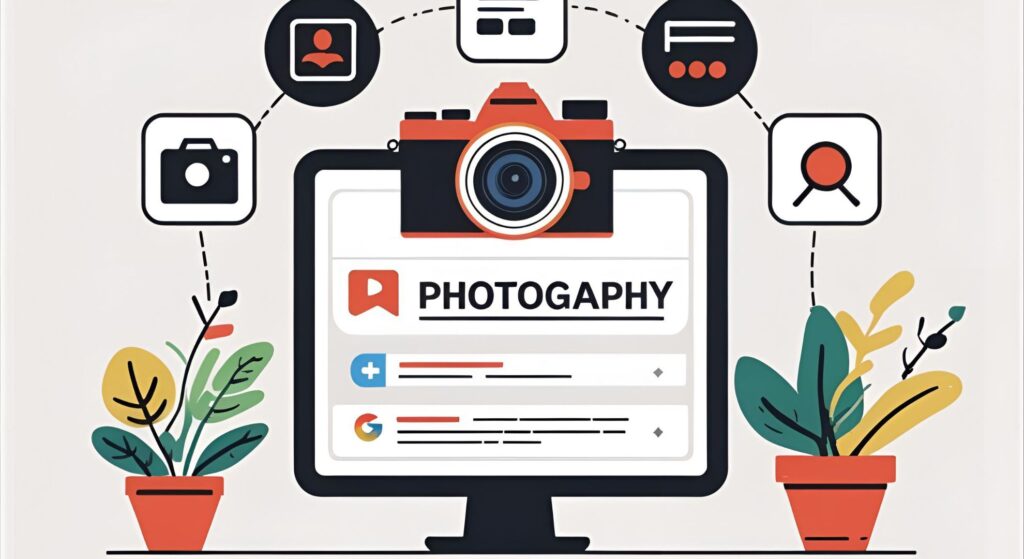Local SEO photography has emerged as the cornerstone of successful local marketing strategies, fundamentally transforming how businesses connect with their communities while driving measurable engagement and search visibility improvements. Modern consumers increasingly rely on visual cues to evaluate local businesses, with research indicating that listings with high-quality photos receive 42% more requests for directions and 35% more click-throughs to websites compared to those without visual content. The strategic implementation of visual elements across digital platforms creates powerful engagement opportunities that transcend traditional text-based marketing approaches.
The complexity of local visual marketing extends beyond simple photo uploads to encompass comprehensive content ecosystems that reflect community values, seasonal dynamics, and authentic brand storytelling. Successful visual strategies require understanding how different platforms prioritize visual content, implementing technical optimizations that enhance search visibility, and developing consistent brand aesthetics that resonate with local audiences. This evolution represents a critical shift toward experiential marketing that builds emotional connections while supporting practical business objectives including foot traffic generation, online engagement, and revenue growth.
Key Takeaways
• Platform-specific optimization maximizes visual content performance across Google My Business, social media channels, and local directories through format-appropriate content and strategic posting schedules
• Community-focused storytelling creates authentic connections with local audiences by showcasing neighborhood involvement, local partnerships, and behind-the-scenes business operations
• Technical optimization strategies improve search visibility through proper image SEO, schema markup implementation, and mobile-responsive visual content delivery
• User-generated content integration amplifies brand reach while building community engagement through customer photos, reviews, and social media sharing campaigns
• Seasonal and event-based content captures local search traffic by aligning visual content with community events, holidays, and regional interests
• Performance measurement frameworks enable data-driven optimization through engagement analytics, conversion tracking, and ROI assessment across visual content initiatives
Overview
Local businesses seeking to maximize community engagement must implement comprehensive visual content strategies that combine aesthetic excellence with strategic optimization across multiple digital platforms. This guide examines proven methodologies for creating, optimizing, and distributing visual content that drives meaningful local engagement while supporting broader marketing objectives. The approach emphasizes practical implementation techniques that balance creative excellence with measurable business outcomes, enabling organizations to build stronger community connections through compelling visual storytelling.
Understanding Visual Content Impact on Local Engagement
Visual content fundamentally alters how local businesses communicate with their communities, creating immediate emotional connections that text-based content struggles to achieve. Research demonstrates that human brains process visual information 60,000 times faster than text, making visual elements critical for capturing attention in crowded local markets. The psychological impact of high-quality visual content extends beyond initial attraction to influence purchase decisions, brand perception, and customer loyalty development.

Local businesses benefit disproportionately from visual content strategies due to the inherently personal nature of community-based commerce. Customers seek authentic representations of business environments, product quality, and service experiences before making local purchasing decisions. Visual content provides this transparency while building trust relationships that translate into sustained customer engagement and positive word-of-mouth marketing.
The technical aspects of visual content optimization significantly impact local search performance through improved user engagement signals, reduced bounce rates, and enhanced social sharing potential. Search engines prioritize content that generates positive user interactions, making visual optimization essential for maintaining competitive search visibility. Understanding these dynamics enables strategic visual content development that serves both aesthetic and functional objectives.
Mobile-First Visual Strategy
Mobile device usage dominates local search behavior, with over 76% of local searches occurring on smartphones and tablets. Visual content must be optimized for mobile consumption through responsive design implementation, fast loading times, and thumb-friendly interaction elements. Mobile-first visual strategies acknowledge different consumption patterns while ensuring optimal user experiences across all device types.
The mobile photography trend enables businesses to create authentic, timely visual content using readily available technology. Strategic mobile content creation includes behind-the-scenes documentation, real-time event coverage, and customer interaction showcases that provide immediate engagement opportunities while building ongoing content libraries for future marketing initiatives.
Google My Business Visual Optimization
Google My Business represents the most critical platform for local visual content optimization, directly influencing local search rankings and customer decision-making processes. Profile photos receive significant visibility in local search results and Maps displays, making professional visual content essential for competitive positioning. Strategic photo selection should showcase business exteriors, interiors, products, services, and team members to provide comprehensive visual representations.
The Google My Business photo categories require specific optimization approaches tailored to platform requirements and user expectations. Logo optimization ensures consistent brand recognition across search results while exterior photos help customers locate physical businesses. Interior photos build confidence in business environments while product and service photos demonstrate quality and variety. Team photos humanize businesses while building personal connections with potential customers.
Regular photo updates signal business activity to Google’s algorithms while providing fresh content that encourages repeat customer engagement. Seasonal photo updates, event documentation, and new product showcases maintain profile freshness while supporting ongoing search visibility. Strategic posting schedules maximize photo visibility through timing optimization based on local audience activity patterns.
Advanced GMB Visual Features
Google Posts within Google My Business profiles enable businesses to share timely visual content that appears directly in search results and Maps listings. Post optimization includes compelling visuals paired with keyword-rich descriptions and clear calls-to-action that encourage customer engagement. Strategic post categories include offers, events, product highlights, and updates that serve different marketing objectives while maintaining consistent visual branding.
Q&A sections within Google My Business profiles benefit from visual enhancement through photo attachments that provide additional context for customer inquiries. Visual Q&A responses demonstrate business expertise while providing valuable information that influences customer decisions. This strategy transforms basic customer service into marketing opportunities that showcase business knowledge and customer care quality.
Social Media Visual Content Strategy
Social media platforms provide extensive opportunities for local businesses to share visual content that builds community engagement while driving traffic to business locations. Platform-specific optimization acknowledges different audience expectations, content formats, and algorithm preferences that influence content visibility and engagement rates. Instagram prioritizes high-quality photography and Stories content, while Facebook favors engaging videos and community-focused posts.
Content calendar development ensures consistent visual content delivery while aligning with local events, seasonal trends, and business promotions. Strategic planning includes holiday celebrations, community events, industry trends, and behind-the-scenes content that provides diverse engagement opportunities. Consistent posting schedules maintain audience engagement while supporting algorithm preferences for active, engaged business profiles.
Local hashtag strategies increase content discoverability within specific geographic markets while building connections with community-focused social media users. Research-based hashtag selection includes location-specific tags, industry terms, and trending local topics that maximize content reach within target markets. Strategic hashtag implementation balances popular terms with niche-specific tags that attract qualified local audiences.
Community-Focused Content Creation
User-generated content campaigns encourage customers to share their experiences while providing authentic visual testimonials that influence potential customers. Strategic campaigns include photo contests, review incentives, and social media challenges that generate organic content while building brand awareness. These initiatives create content libraries that extend marketing reach while demonstrating genuine customer satisfaction.
Local event coverage and community involvement documentation showcase business engagement with neighborhood activities while creating content that resonates with local audiences. Coverage includes charity participation, local festival involvement, school fundraising support, and community partnership announcements that demonstrate authentic local commitment while generating shareable content.
Video Content for Local Engagement
Video content provides powerful opportunities for local businesses to showcase personality, expertise, and community connections through dynamic visual storytelling. Short-form video content performs exceptionally well across social media platforms while supporting local search optimization through increased engagement signals and social sharing potential. Strategic video content includes business tours, product demonstrations, customer testimonials, and behind-the-scenes documentation.
Live streaming capabilities enable real-time community engagement through virtual events, Q&A sessions, and product launches that create immediate interaction opportunities. Live content generates urgency and exclusivity that drives engagement while providing authentic business representations that build trust with local audiences. Strategic live streaming includes cooking demonstrations for restaurants, product reveals for retail businesses, and educational content for service providers.
Video optimization for local search includes keyword-rich titles, detailed descriptions, and location-specific tags that improve discoverability through search algorithms. Technical optimization includes mobile-responsive formatting, fast loading capabilities, and accessibility features that ensure optimal user experiences across different devices and user needs.
Platform-Specific Video Strategies
YouTube optimization enables businesses to build substantial video libraries that support long-term content marketing objectives while improving search visibility for educational and informational queries. Strategic YouTube content includes how-to videos, industry insights, customer success stories, and community involvement documentation that demonstrates expertise while building subscriber bases.
TikTok and Instagram Reels provide opportunities for creative, entertaining content that showcases business personality while reaching younger demographic segments. Strategic short-form content includes trend participation, creative product showcases, day-in-the-life content, and community event coverage that aligns with platform cultures while maintaining professional brand representation.
Photography Best Practices for Local Business
Professional photography significantly impacts customer perceptions while supporting marketing efforts across multiple platforms and applications. Strategic photography planning includes business environment documentation, product showcases, team portraits, and community involvement coverage that provides comprehensive visual brand representation. Investment in professional photography generates long-term content assets that support sustained marketing initiatives.
Lighting optimization ensures high-quality visual content regardless of shooting conditions or budget constraints. Natural lighting strategies maximize photo quality while minimizing technical requirements, making professional-appearing content accessible for businesses with limited photography budgets. Strategic timing includes golden hour photography for exterior shots and consistent lighting setups for interior and product photography.

Brand consistency across all visual content maintains recognition and trust while building cohesive marketing presence across platforms. Style guide development includes color schemes, composition guidelines, filter preferences, and visual elements that ensure consistent brand representation regardless of content creator or platform requirements.
Equipment and Technical Considerations
Smartphone photography capabilities enable businesses to create high-quality visual content without significant equipment investments. Strategic mobile photography includes composition techniques, editing applications, and technical settings that maximize photo quality using readily available technology. Professional mobile photography techniques produce content suitable for marketing applications while maintaining cost-effectiveness.
Equipment upgrade strategies balance quality improvements with budget considerations while focusing on tools that provide maximum impact across multiple content applications. Priority equipment includes quality cameras, lighting solutions, and editing software that enable professional content creation while supporting efficient workflow development.
User-Generated Content Campaigns
Customer-created content provides authentic marketing materials while building community engagement through participation incentives and recognition programs. Strategic UGC campaigns include photo contests, review incentives, and social media challenges that encourage customer participation while generating valuable marketing content. These initiatives create content libraries that extend reach while demonstrating genuine customer satisfaction.
Implementation strategies include clear campaign guidelines, attractive incentives, and streamlined participation processes that encourage maximum customer engagement. Legal considerations include usage rights, content moderation, and privacy protection that ensure compliant campaign execution while protecting both business and customer interests.
Content curation and optimization transform user-generated content into professional marketing materials through strategic editing, brand integration, and platform optimization. Curation processes maintain content quality while respecting creator contributions and building ongoing participation in future campaigns.
Engagement and Community Building
Recognition programs acknowledge customer contributions while encouraging continued participation in content creation initiatives. Strategic recognition includes social media features, website testimonials, and in-store displays that demonstrate appreciation while inspiring additional customer engagement.
Community building through visual content includes customer spotlights, success story documentation, and behind-the-scenes sharing that creates personal connections between businesses and their communities. These strategies transform transactional relationships into community memberships that support long-term customer retention and advocacy.
Performance Measurement and Analytics
Comprehensive analytics implementation tracks visual content performance across multiple metrics including engagement rates, conversion achievements, and brand awareness improvements. Platform-specific analytics provide insights into content preferences, audience demographics, and optimal posting strategies that inform ongoing optimization decisions.

Google Analytics integration enables tracking of visual content impact on website traffic, conversion rates, and customer journey progression. Strategic measurement includes traffic source analysis, behavior flow examination, and goal completion tracking that quantifies visual content ROI while identifying optimization opportunities.
Social media analytics provide detailed insights into audience engagement patterns, content preferences, and viral potential that inform future content creation strategies. Cross-platform analysis reveals successful content themes and formats that can be adapted across different marketing channels for maximum impact.
ROI Assessment and Optimization
Cost-per-engagement analysis enables evaluation of visual content investment effectiveness while identifying high-performing content types and distribution strategies. Strategic ROI assessment includes production costs, time investments, and opportunity costs balanced against engagement improvements, conversion achievements, and revenue attribution.
Conversion tracking connects visual content engagement to actual business outcomes including foot traffic increases, appointment bookings, and sales generation. Attribution modeling helps identify content types and platforms that provide greatest business value while informing resource allocation decisions for future content investments.
Frequently Asked Questions
What types of visual content perform best for local businesses? High-quality photos showcasing business environments, products, and team members typically generate strongest engagement. Behind-the-scenes content, customer testimonials, and community involvement documentation also perform well by building authentic connections with local audiences.
How often should businesses update their visual content? Google My Business photos should be updated monthly with fresh content, while social media requires 3-5 posts weekly for optimal engagement. Seasonal updates, event coverage, and new product launches provide natural opportunities for regular content refreshing.
What photography equipment is essential for creating professional visual content? Modern smartphones with good cameras can produce professional-quality content when combined with proper lighting and composition techniques. Businesses seeking higher quality may invest in DSLR cameras, lighting equipment, and tripods, but these aren’t essential for effective local marketing.
How do businesses encourage customers to create user-generated content? Successful strategies include photo contests, review incentives, social media challenges, and simple requests for customers to tag businesses in their posts. Clear guidelines and attractive incentives increase participation rates while maintaining content quality.
What role does video content play in local marketing strategies? Video content generates higher engagement rates than photos while providing opportunities for personality showcase and expertise demonstration. Short-form videos perform particularly well on social media while longer educational content supports search optimization and authority building.
How do businesses measure visual content ROI effectively? Effective measurement includes engagement metrics, website traffic attribution, conversion tracking, and business outcome correlation. Tools like Google Analytics, social media insights, and customer feedback help quantify visual content impact on actual business results.
What legal considerations affect visual content creation? Businesses must obtain proper permissions for customer photos, respect copyright laws for stock imagery, and maintain model releases for recognizable individuals. Clear terms of service for user-generated content campaigns protect both businesses and customers while ensuring compliant content usage.
How should businesses optimize visual content for search engines? SEO optimization includes descriptive file names, alt text implementation, keyword-rich captions, and structured data markup. Geographic information in metadata and captions helps search engines understand local relevance while improving discovery potential.
Supercharge Local Visibility Through Visually-Driven SEOSources
Visual Content Strategy Resources:
- Google My Business Photo Guidelines
- Facebook Business Visual Content Guide
- Instagram Business Resources
Photography and Design Tools:
Analytics and Measurement Platforms:
- Google Analytics Visual Content Tracking
- Social Media Analytics Tools
- Hootsuite Social Media Management
Local SEO and Visual Optimization:
Video Content Creation:
Elevate your local engagement and community connection through strategic visual content that drives measurable business results. Cloud 7 Agency specializes in developing comprehensive visual marketing strategies that combine creative excellence with technical optimization, ensuring your visual content not only captures attention but converts viewers into customers. Contact our visual marketing specialists today to discover how compelling visual storytelling can transform your local business presence and community engagement.

